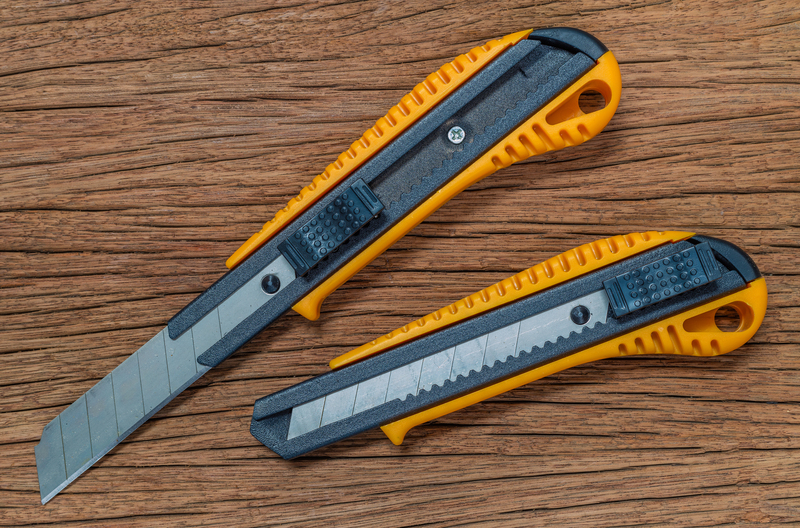Essential Steps for Safely Moving Your Bed and Mattress
Whether you're relocating to a new home or simply rearranging your bedroom, moving your bed and mattress can be quite the task. Damaging your mattress or bed frame is easy if proper precautions aren't taken. In this comprehensive guide, you'll discover all the essential steps for moving a bed and mattress safely. From preparation and disassembly to transportation and reassembly, follow these instructions to make the process seamless and stress-free.

Why Safe Bed and Mattress Moving Matters
Your bed and mattress are likely among the most important--and expensive--pieces of furniture in your home. Improper handling can lead to broken frames, torn upholstery, or even injury. In addition, your sleep quality depends on keeping your mattress and bed structure in the best possible condition. By understanding the safekeeping steps involved, you'll protect your investment and your back!
Preparation: The Key Phase to Moving a Bed and Mattress
The first step in moving your mattress and bed is thorough preparation. Begin several days before your move to ensure you have enough time. Here's how:
Gather the Necessary Packing Supplies
- Mattress bag: Protects from dirt, moisture, and damage.
- Furniture blankets or moving pads: Prevent scratches and dings.
- Plastic wrap or stretch wrap: Secures parts and keeps bedding clean.
- Bubble wrap: For delicate wooden or metal bed frame features.
- Moving straps or ropes: Helps with carrying and securing during transit.
- Tools: Wrenches, screwdrivers, Allen keys for disassembly.
- Packing tape and ziplock bags: Keep small screws and bolts organized.
- Labels and markers: For easy reassembly and organization.
Strip Bedding and Accessories
Remove all linens, blankets, pillows, and accessories from both bed and mattress. Wash and pack them separately to prevent them from getting mixed up or damaged during the move. Store bedding in clearly labelled bags or boxes to make unpacking easier.
Disassembling Your Bed Frame: Step by Step
Most beds and frames need to be taken apart so they fit through doorways and into moving vehicles. Failure to do so can easily result in damage or injury.
1. Photograph and Document
Before you begin, take clear photos of your bed frame setup. Focus on the connecting points and how pieces join together. This will be a lifesaver when you reassemble the bed in your new home.
2. Remove the Mattress and Box Spring
- Carefully lift the mattress and box spring off the frame.
- Slip each into a protective mattress bag and seal it tight.
- Set aside in a flat position to prevent damage or distortion.
3. Take Apart the Bed Frame
- Using tools, unscrew or detach side rails, guardrails, and slats.
- Keep all nuts, bolts, and small components in a labelled ziplock bag and tape it securely to the appropriate bed piece.
- If your frame is especially large (such as a king or queen size), consider breaking it down further.
4. Protect Each Component
Wrap wooden, metal, or upholstered parts in moving blankets or bubble wrap to prevent nicks or tears. Use stretch wrap to bundle pieces together for easier handling and less risk of loss.
How To Move Your Mattress Safely
Encase the Mattress
Before any moving, slip your mattress into a mattress cover or bag. This guards against:
- Dirt
- Moisture
- Bed bugs or pests
- Tears or snags
Mattress bags are widely available at moving supply stores and online retailers.
Getting the Mattress Out of the Room
- Clear a path and remove any obstacles or furniture.
- Lift with your knees, not your back - mattresses can be unwieldy and heavy.
- Ask for help! Carrying a mattress alone risks damage and personal injury.
- If your mattress is memory foam, avoid folding or bending it.
- For tight corners, rotate the mattress vertically or "walk" it around corners.
Transporting the Mattress
- Place your mattress flat in the moving vehicle to prevent it from warping.
- Do not stack heavy items on top - this can cause permanent indentations.
- Secure the mattress with ropes or moving straps so it doesn't slide.
Never strap a mattress to a car roof - this is unsafe and often illegal.
How To Safely Move Your Bed Frame
Once disassembled, each part of the bed frame needs special care:
Wooden Frames
- Wrap in furniture blankets and secure with tape or straps.
- Avoid stacking sharp or heavy objects nearby.
- Handle with care, as wood can scratch easily.
Metal Frames
- Bundle long pieces and wrap sharp ends with bubble wrap.
- Cover corners to prevent injury during transport.
- Store screws and bolts together in a ziplocked bag attached to a main piece.
Upholstered Headboards/Frames
- Wrap completely in plastic to guard against stains or snags.
- Use extra padding on decorative or delicate areas (like tufted segments).
Moving Day: Lifting and Transport Tips
Lifting Techniques to Prevent Injury
- Use proper lifting technique: keep your back straight, bend your knees, and lift with your legs.
- Don't carry too much at once - make multiple trips if needed.
- If available, use a dolly or hand truck to move heavier components.
- Always have a partner for heavier or awkward items.
Rushing is a leading cause of accidents when moving large items--take it slow and steady.
Packing into the Moving Vehicle
- Mattress should lie flat, if possible.
- Bed frame parts can be stacked or leaned, but avoid putting weight on top of delicate pieces.
- Secure all items tightly to avoid shifting during transport.
- Place smaller parts or hardware packs in an easily accessible spot so nothing gets lost.
Reassembling Your Bed and Mattress in the New Home
Getting Ready to Reassemble
- Unpack the mattress and bed frame components immediately to prevent damage from prolonged compression or exposure.
- Clean the area where the bed will be placed - moving is a perfect time to vacuum or dust.
- Lay out all tools and hardware packs before starting assembly.
Putting the Bed Frame Back Together
- Refer to your photographs and labels to guide assembly.
- Work on a flat surface and follow manufacturer's instructions if available.
- Be patient! Secure all connections tightly but do not over-tighten, especially on wood.
Placing the Mattress
- Once the frame is secure, place the box spring and then the mattress on top.
- Remove mattress bag and allow to air for several hours, especially if the move was long or humid.
- Check for any tears, stains, or damage - if found, address immediately.
Special Considerations For Different Mattress Types
- Memory Foam: Avoid folding as it can cause permanent damage. Carry flat or rolled if manufacturer approves.
- Latex Mattress: Highly flexible but heavy--always use a mattress bag for support and get extra hands to help lift.
- Inner Spring: May be bent slightly but should not be folded sharply--use extra protection against bending.
- Hybrid Mattress: Handles like memory foam; avoid bending, always move flat.
Frequently Asked Questions About Moving a Bed and Mattress
How Do I Store a Mattress If Not Reassembling Immediately?
Store the mattress flat, covered with a protective bag, in a climate-controlled environment. Avoid standing it on its side for long periods, as this can deform the materials inside.
Can I Move A Mattress Alone?
It's strongly advised to have an extra person assist, especially for larger beds. Mattresses are bulkier and heavier than they appear and can easily twist or cause falls during solo moves.
Should I Hire Professionals to Move My Bed and Mattress?
If you're dealing with expensive, delicate, or very heavy beds and mattresses, professional movers with the right equipment ensure the utmost safety. Most moving companies offer mattress and bed moving as specialized services.

Summary: Safely Relocate Your Bed and Mattress Like a Pro
Moving your bed and mattress doesn't have to be overwhelming. With the right planning, supplies, and techniques, you can protect your investment and avoid injuries during your move.
- Prepare well in advance with appropriate packing materials.
- Disassemble, document, and protect every component.
- Handle the mattress with care--never fold memory foam or let it get wet.
- Lifting with proper technique and teamwork is essential.
- Secure during transportation and unpack promptly upon arrival.
Follow these essential steps for safely moving your bed and mattress and enjoy a seamless, stress-free transition into your new space. Prioritize protection, patience, and teamwork to ensure a great night's sleep--no matter where life takes you.
Final Bed and Mattress Moving Tips & Checklist
- Keep all hardware labelled and together; take photos before disassembly.
- Use the right type and size of mattress bag.
- Don't overload yourself; get help when needed.
- Be extra careful with tight corners, stairs, and narrow hallways.
- Inspect everything on arrival and assemble as soon as possible.
Now that you know the essential steps for safely moving your bed and mattress, you're ready to take on your move with confidence!



